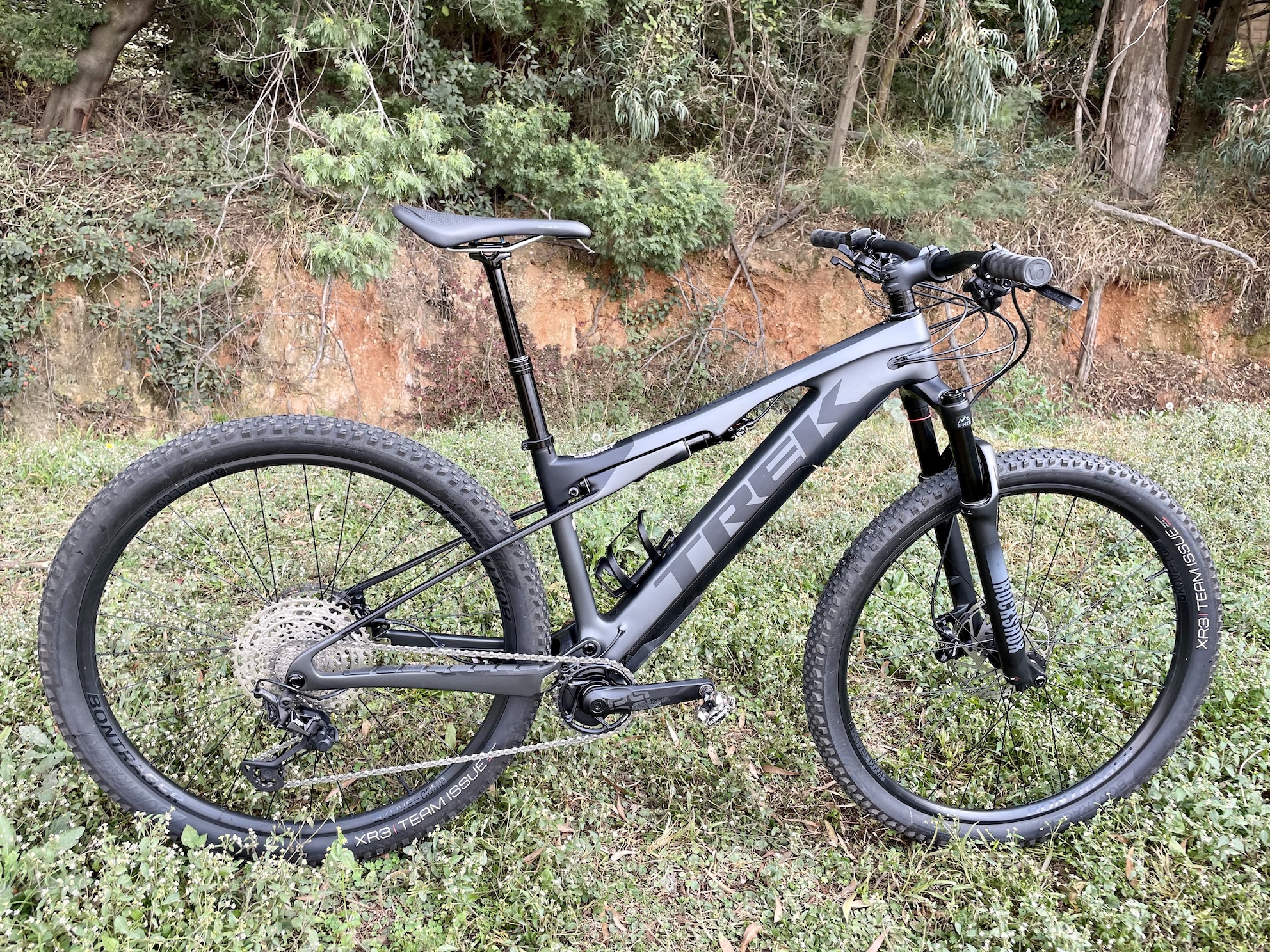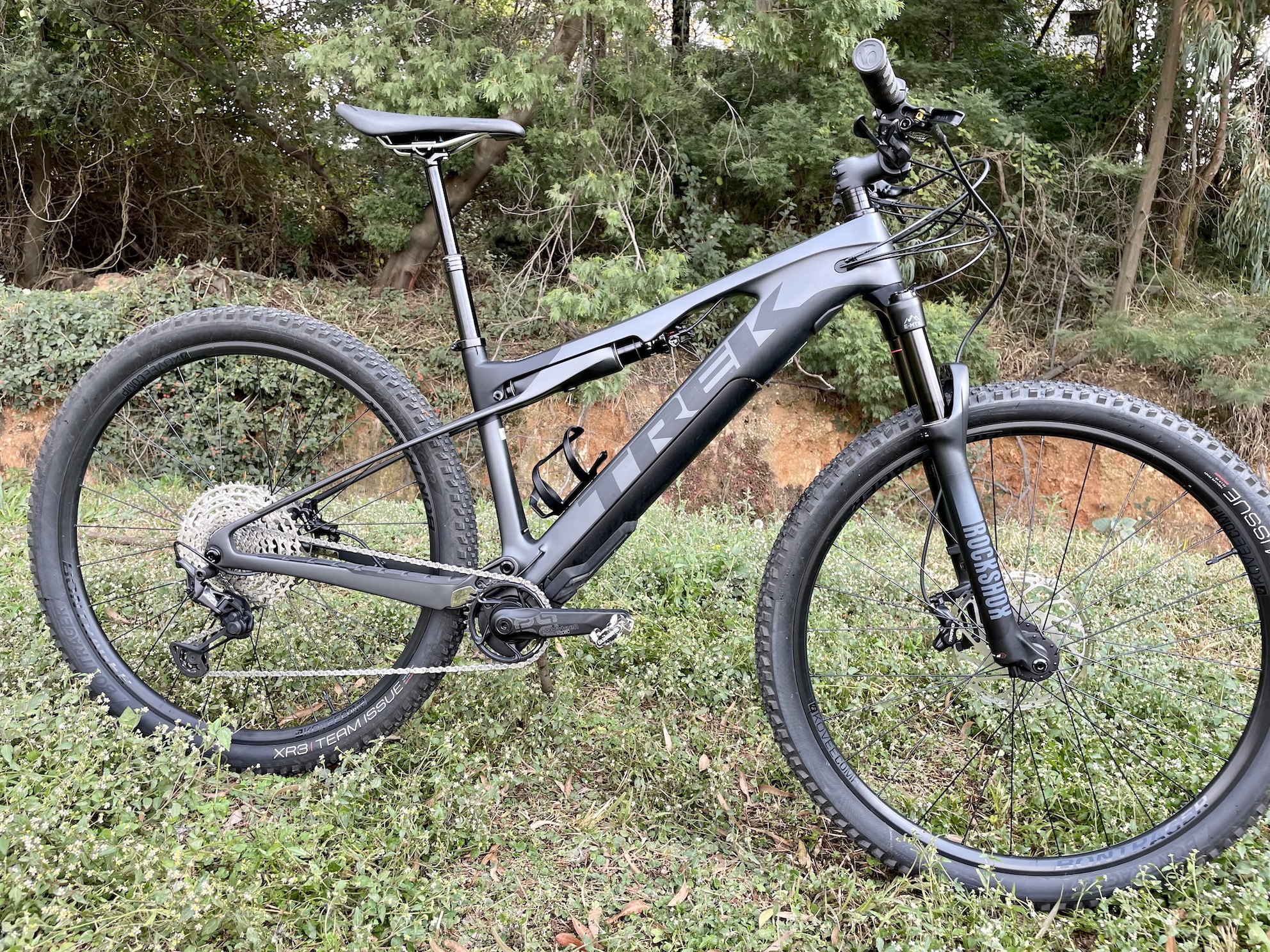eBikes are coming thick and fast now. It was inevitable really. The cycling industry needs to keep progressing as new technology becomes available. When we first saw the Trek E-Caliber we were reminded of how impressed we were with the Supercaliber a couple of years back. But we did wonder exactly who in South Africa would buy a 60mm travel e-mountain bike. Well, after test-riding it, we now know…
Trek is one of the world’s biggest performance bike brands. It doesn’t just settle on one suspension design and try make that work across all its full-suspension models. No, it invests in R&D to create completely new designs for each mountain bike category. Therefore, the launch of the Supercaliber in 2019 wasn’t surprising.

Trek wanted to make a bike that was perfectly suited to its pro XCO racing team, which comprises a number of high-profile females. At the time, female XCO racers would opt for a hardtail on courses with a lot of climbing, sacrificing the control that a rear shock offers in favour of less weight. The Supercaliber made it possible to ride the same bike on all courses and you have to give them props because it appears to have given its riders an edge.
Jolanda Neff won the Olympic Games title in Tokyo in 2021 and Evie Richards won the 2021 XCO World Champs title – both on the Supercaliber. What a feather in the cap for the Trek design team! And it’s not only the women racing the Supercaliber to success, Vlad Dascalu has achieved seven XCO World Cup podiums on his Supercaliber since 2021.
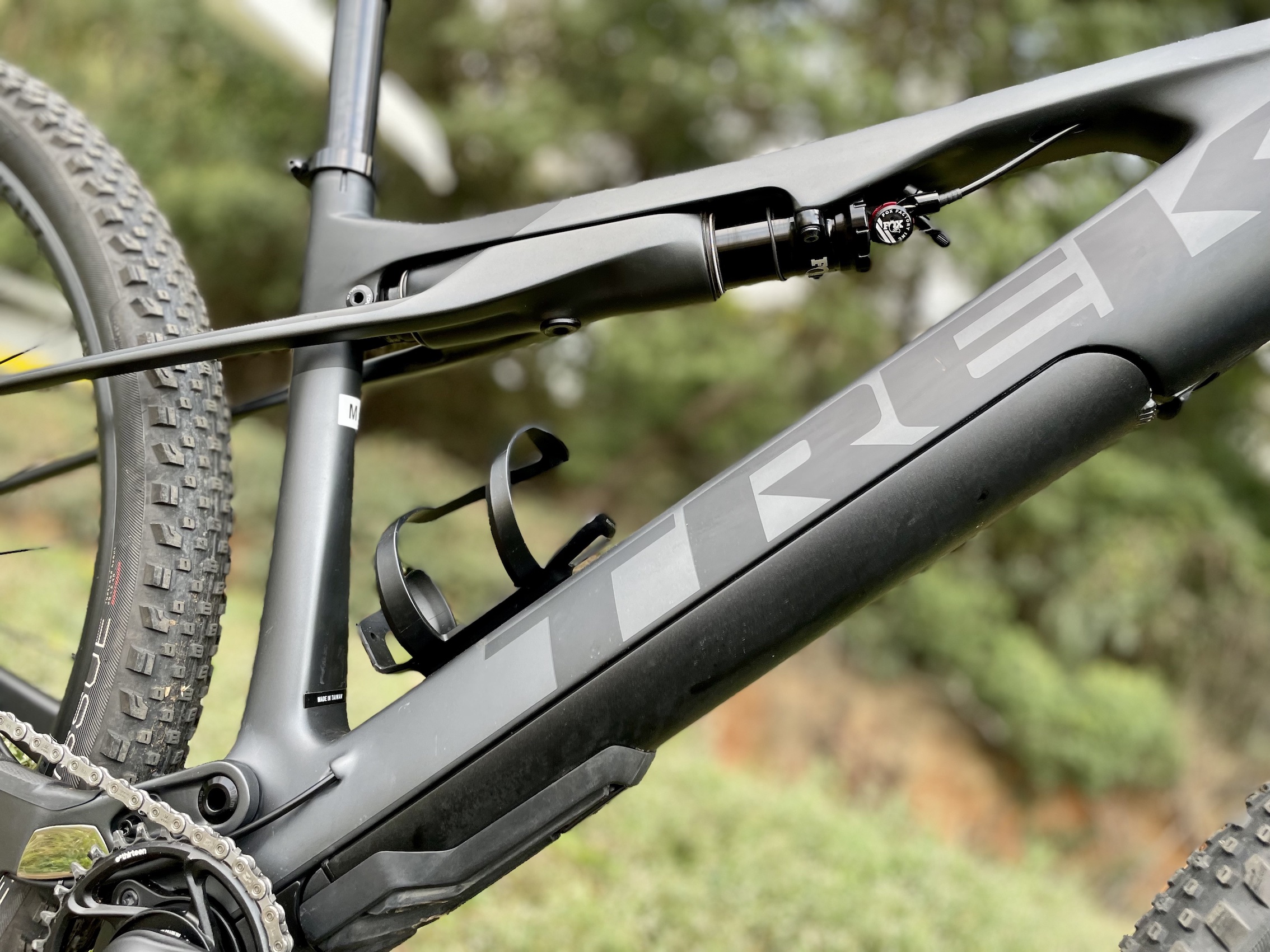
So the Supercaliber has Trek’s proprietary IsoStrut rear shock that’s only really visible from below. It’s neatly – actually beautifully – integrated into the toptube and, combined with slim seatstays, eliminates the need for a rear pivot to give 60mm of travel. This is all present on the E-Caliber 9.6, which makes the bike reasonably light for an eBike – 18.5kg to be more specific. It’s also a full carbon frame. The 9.6 is the bottom of the E-Caliber range. The top-of-the-range 9.9 XX1 AXS weighs in at 15.7kg, which makes it one of the lightest performance full-suspension eBikes there is.
Let’s talk about the full-suspension. Most eBikes in South Africa come with mid-travel suspension. That’s 120-150mm of travel. These are bikes designed for trail riding or trail shredding. There’s no real rush to climb but there’s a high level of importance on the bike’s ability to consume moderately gnarly or even fully gnarly descending trails and flow lines.
The E-Caliber is a short-travel full-suspension eBike that basically has very little in the way of competition, especially in South Africa. There’s 60mm of travel at the rear and 120mm of travel up front, which is ample for most South African mountain bikers.
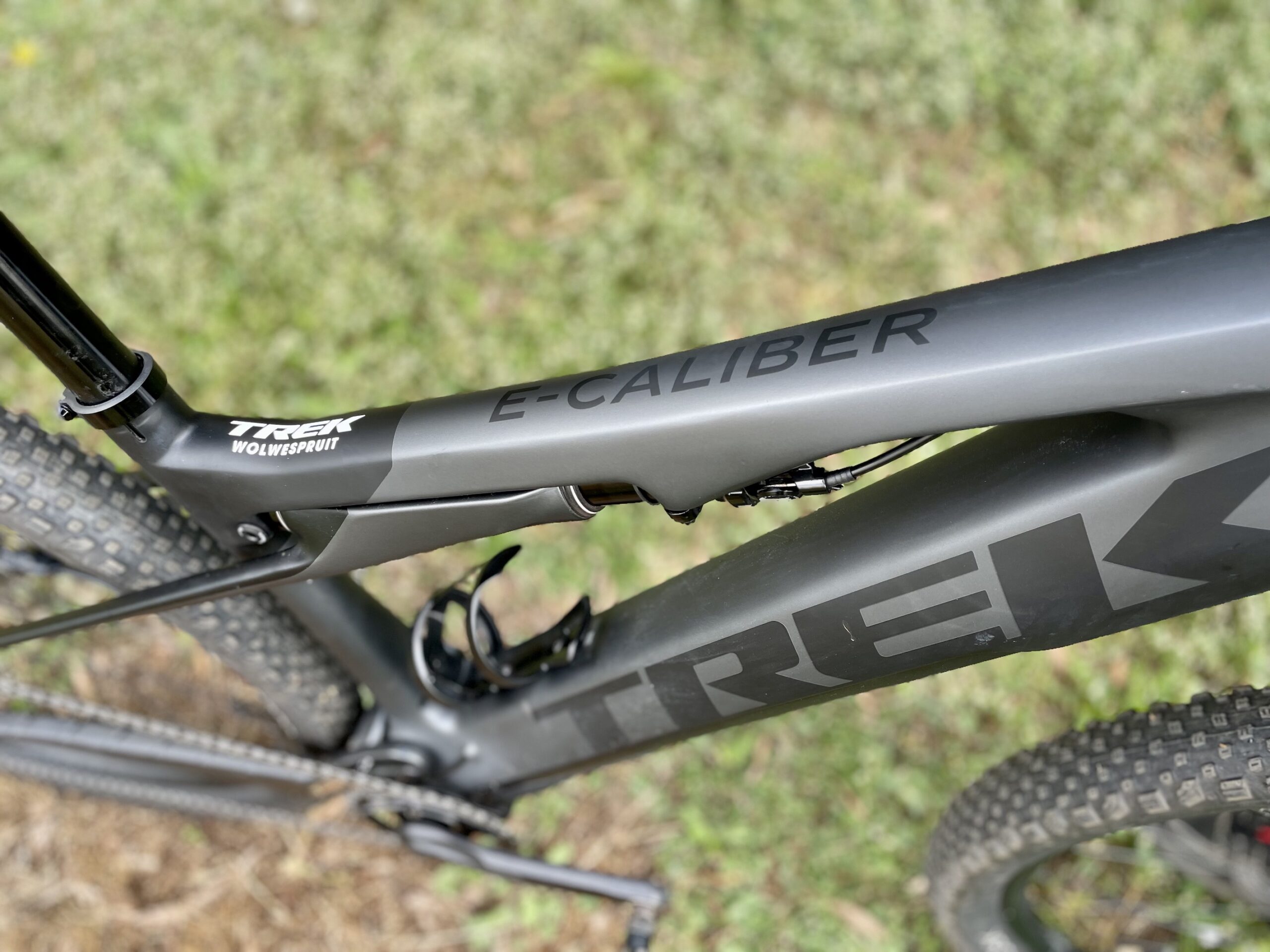
FOUR KEY FEATURES AND OUR OPINION
DRIVE SYSTEM
The Trek E-Caliber uses a Fazua Ride Trail 50 drive system (250Wh battery and 450W motor with 55nM of torque) that can assist up to 32kph when it’s on. When it’s off, it claims there’s zero drag. It’s compatible with a smartphone app that allows you to customise your ride and see battery level useage. The software system is called Black Pepper, which allows the motor to respond immediately as you start to pedal, delivers more power over a wider cadence range and lets you customise your user settings.
OUR OPINION
The E-Caliber most certainly does reach 32kph of assistance. This is essential on this kind of eBike, as most cruising speeds on flat gravel roads are around the high-20/low-30kph region. And we can see this type of eBike (short-travel) becoming popular in the future as more ultra-endurance events open up entries to eBikes. We didn’t download the app, so can’t comment on that, but from our research, it appears to be accurate and effective.
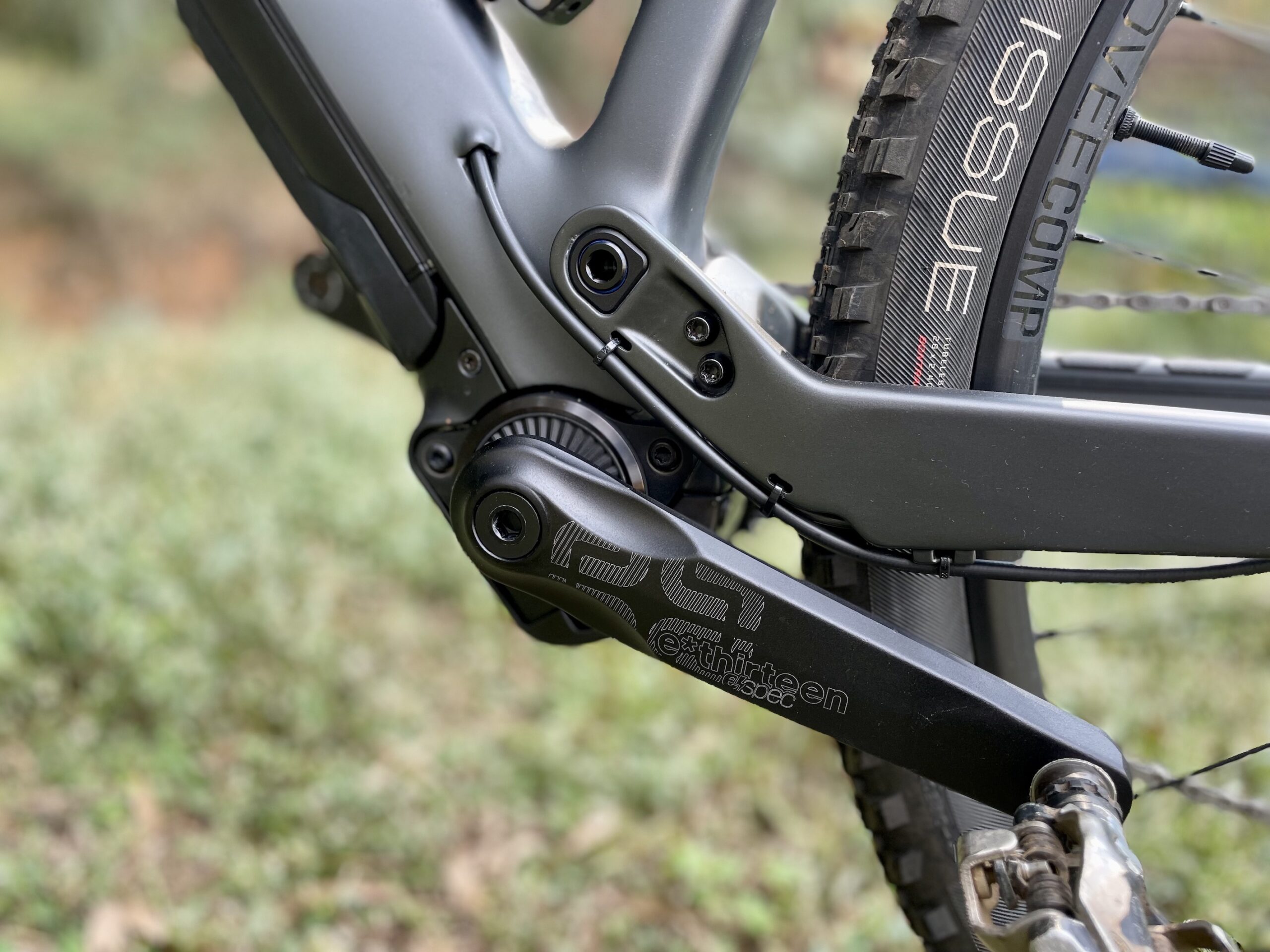
The motor is one of the quieter eBike motors we have experienced and it really does engage immediately, no momentary lag like we have experienced on some other eBikes.
There are three power modes – Breeze, River and Rocket. Breezes delivers a constant 100 Watts of support, while River provides progressive assistance up to 220W, which is linked to how much effort you are putting in. And Rocket adds 250 Watts regardless of rider input (you still have to pedal obviously). What’s noticeable is that the assist doesn’t need to you to be at 80rpm to really kick in, it kicks in at lower and higher cadences, which is particularly beneficial on technical, steep climbs.
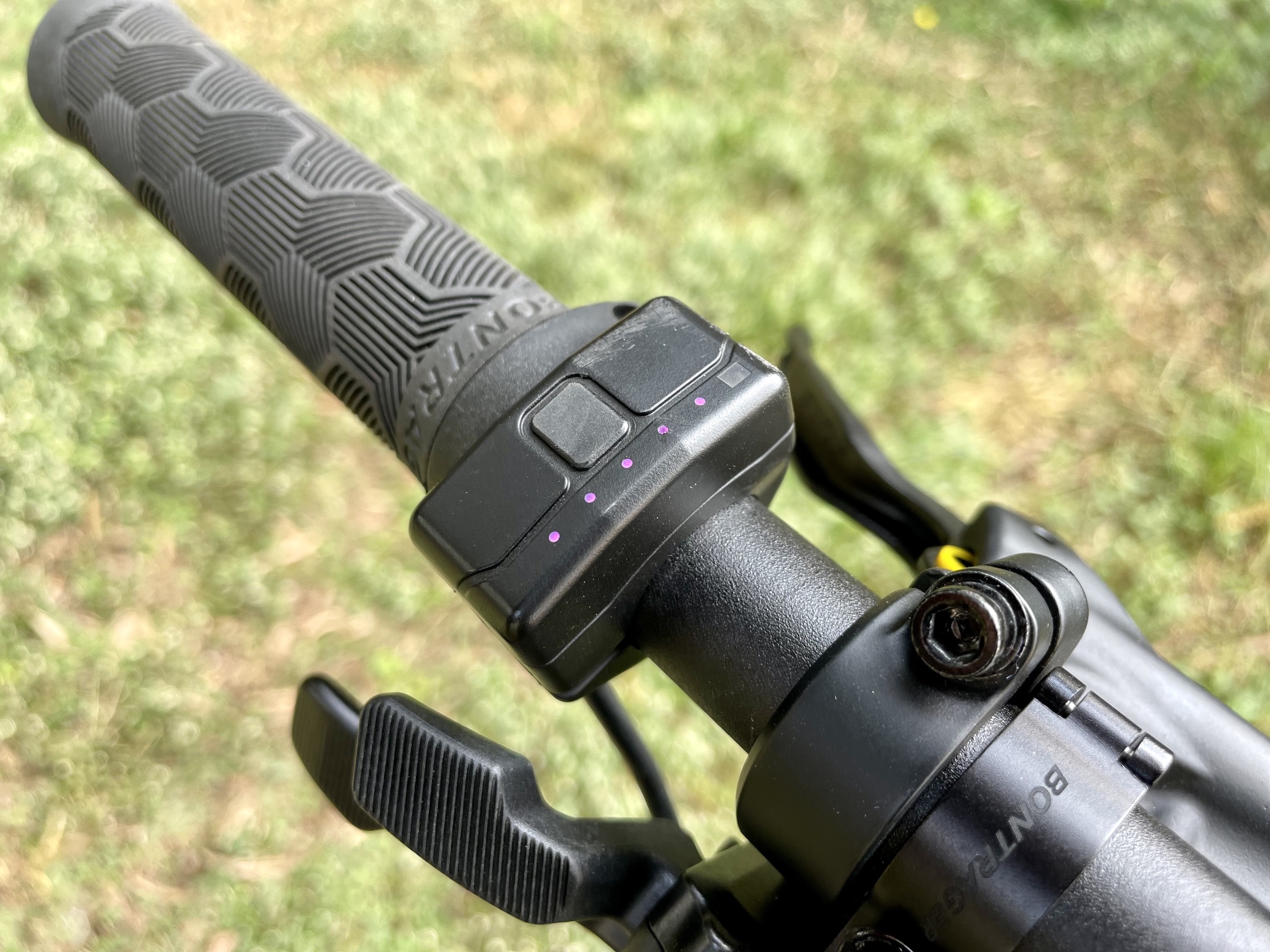
While the modes all worked as claimed, the controls are essentially just sensors and not buttons as with most eBikes. This took some time to get used to and we were inadvertently scrolling through modes because it really is quite a sensitive system. To be honest, we never fully adjusted to this. While very sleek and clever, we prefer a more tactile control set-up.
We never got to really test the range of the battery, but Trek claims that with an assumed rider input of 200 watts, the range of the system is up to 70km with 1200m of climbing in Breeze Mode and 60km with 1000m of climbing in River Mode. The five tiny lights on the power control unit light up when you’re at full battery and gradually extinguish as it uses charge, so there is a visual approximate-charge-remaining indicator.

REMOVEABLE DRIVE PACK
You can completely remove the 2.9kg drive pack (battery and motor) and ride the E-Caliber as a normal mountain bike. It comes with a separate downtube replacement cylinder that you replace the drive pack unit with.
OUR OPINION
Initially we thought this was stupid. Why would you buy an eBike and then remove the very thing that makes it an eBike? But once we rode the E-Caliber without the battery unit, we realised that it really does ride and feel just like a regular bike! Yes, it’s a little weighty compared to a sub-11-kg Supercaliber (the gearing unit stays in the bike), but it’s not much heavier than many regular mountain bikes and it handles just like a regular bike. You’re essentially buying two bikes in one, which is actually pretty smart… We also rode the E-Caliber with the battery pack, but switched off and can confirm that there really is no drag whatsoever. So even if you do get your battery range judgement a bit wrong, it’s not that at all difficult to pedal home without power.
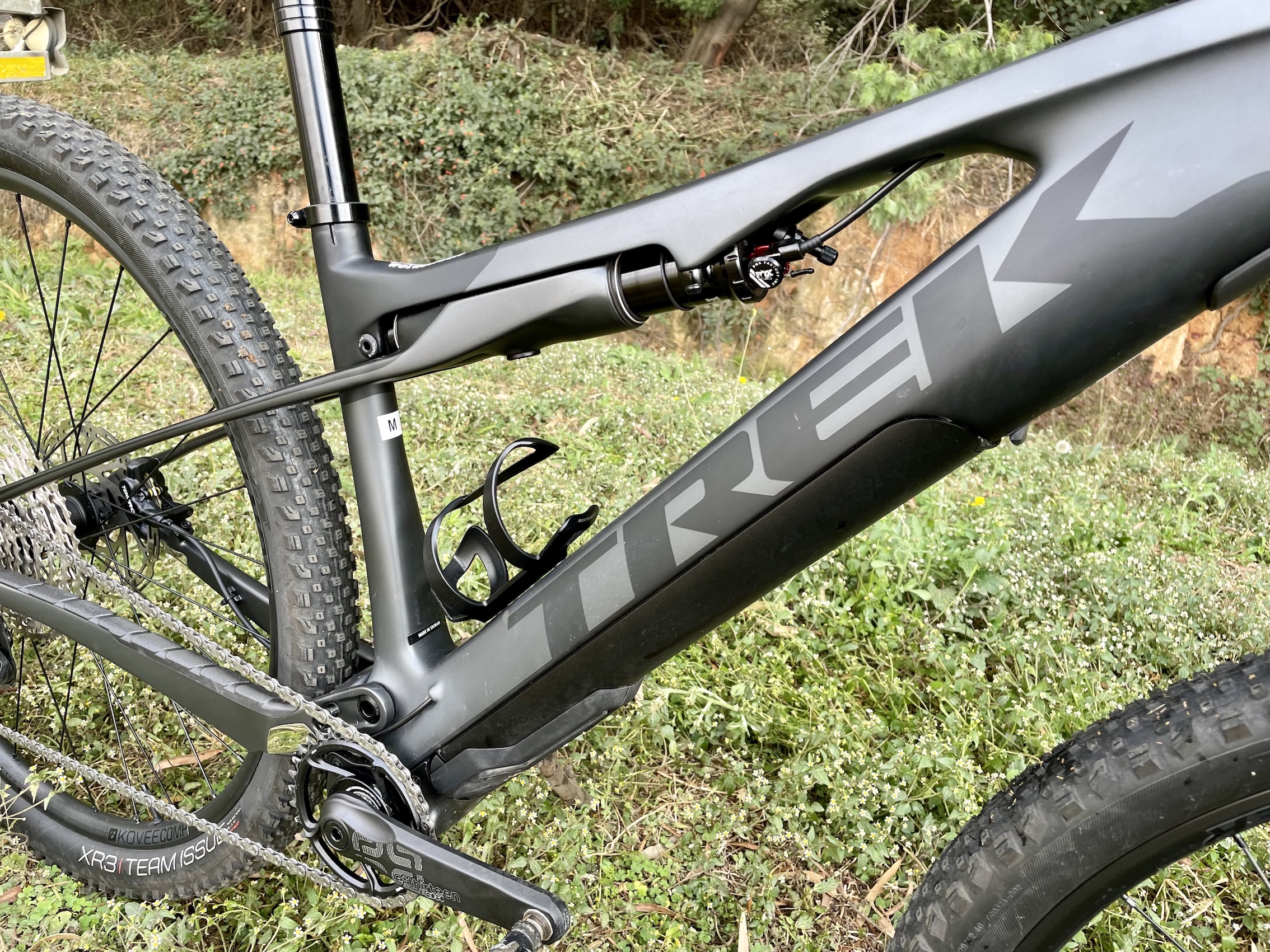
ISOSTRUT SUSPENSION
The IsoStrut suspension, is identical to that found on the Supercaliber. It’s removes a lot of weight from the bike because it doesn’t require the more standard pivots and linkage. It’s designed to climb faster than a full-suspension bike and descend faster than a hardtail.
OUR OPINION
At first we wondered why really bother with 60mm of rear travel on an eBike. But then almost all of the eBikes we have ridden have been mid-travel trail bikes, which you tend to ride on hilly or even mountainous routes because they’re designed to climb steadily and descend masterfully. Riding the E-Caliber on some steep trails as well as some rolling and even flatter trails made us realise that the amount of travel is actually not inadequate for most South African mountain bikers. Bear in mind that while the trail-riding and Enduro-racing market is growing fast, it’s nowhere near the size of the half-marathon/marathon/ultra-marathon segment, most of whom are more interested in fast climbing and steady descending.
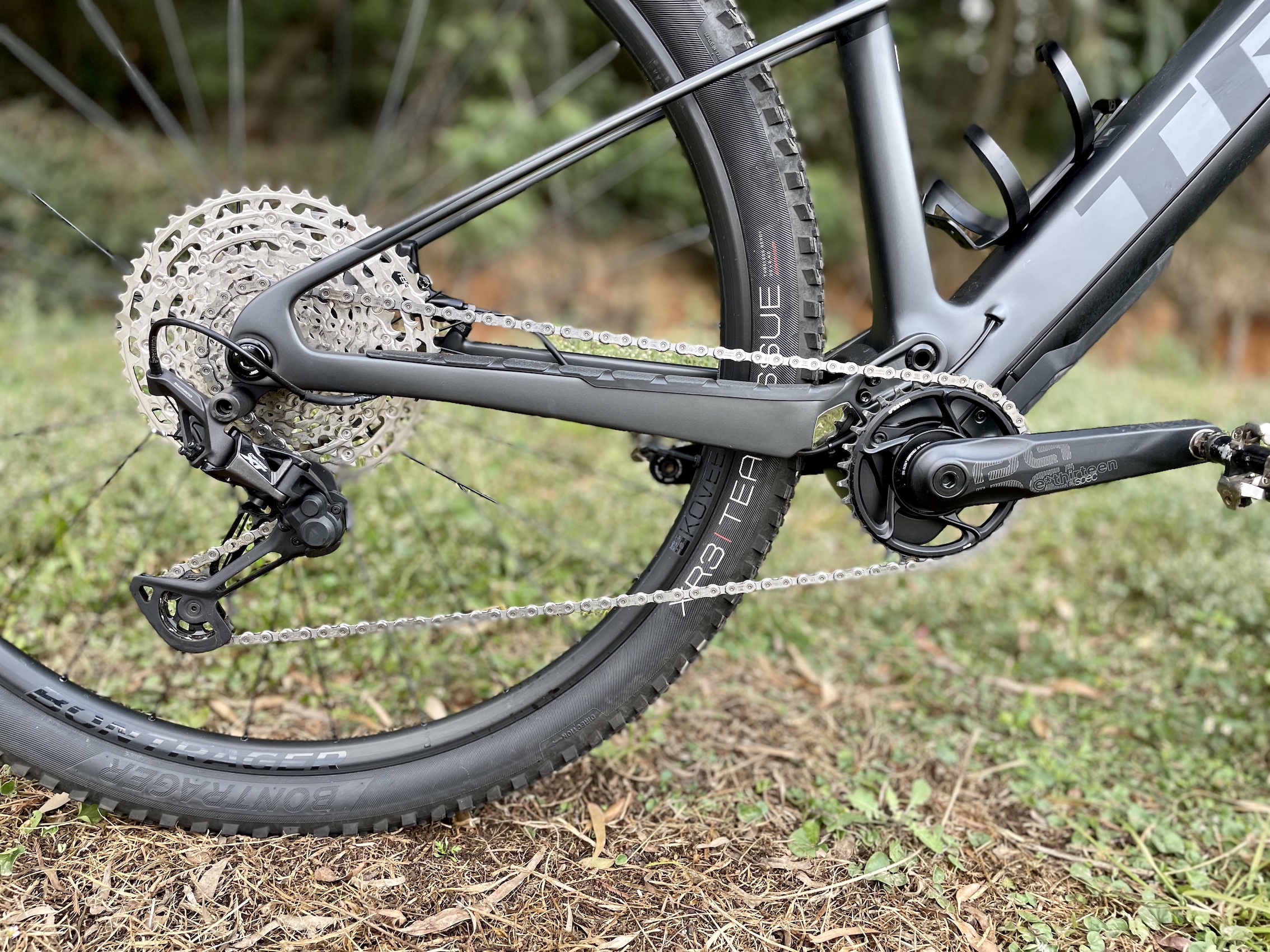
The 120mm of travel up front is 20mm more than you get on the acoustic Supercaliber and we found it to be enough for most obstacles and terrain where you’re going to be riding a 60mm-travel rear shock. The bike has dual-remote lockout, which allows you to simultaneously lock and open the front and rear suspension. We only used this on tar getting to and from the trails and never felt the need to use on any trails. At 67.5 degrees, the headtube angle is a little slacker than the Supercaliber’s 69 degrees and has 10-15mm longer reach (depending on model), which all contributes to the bike’s descending confidence.
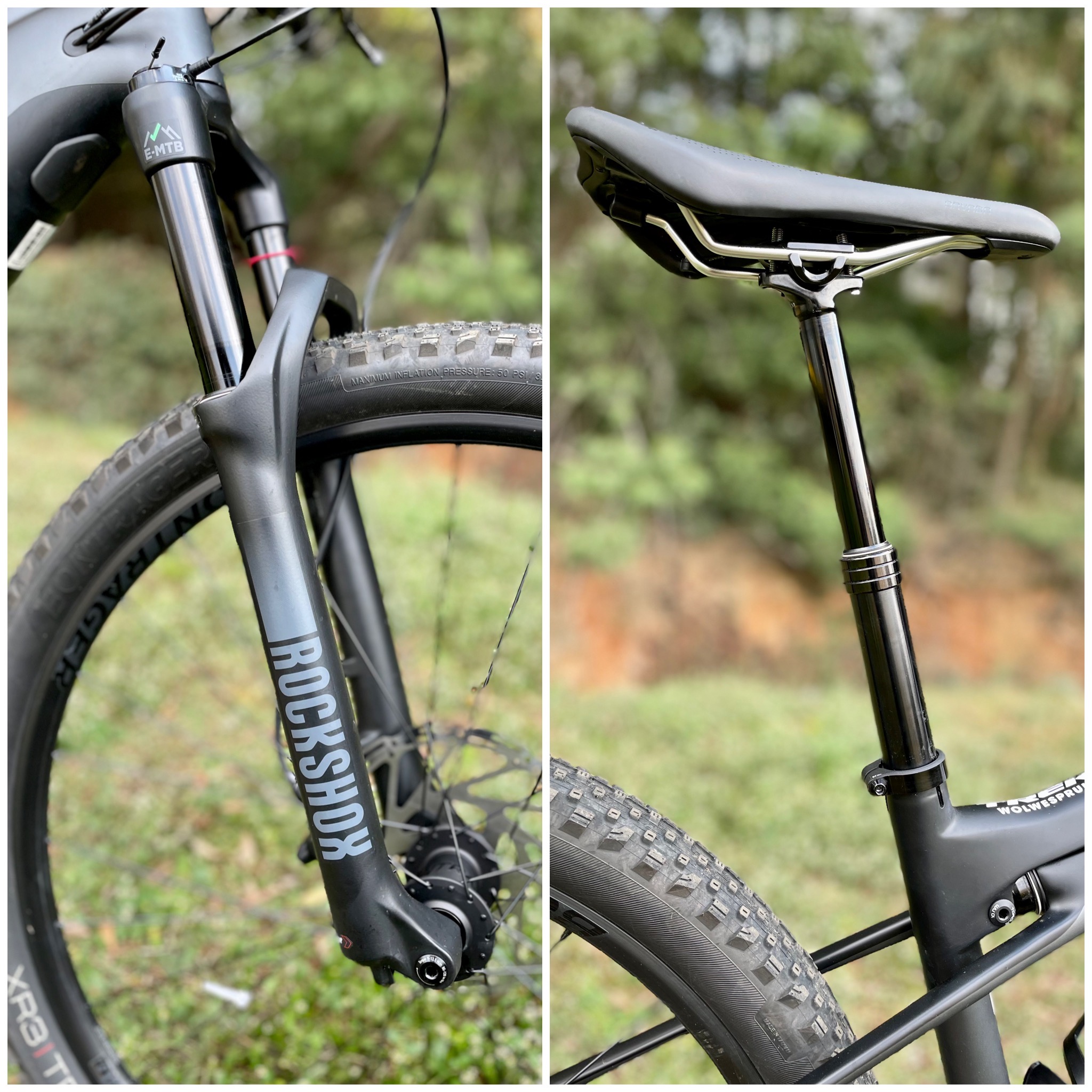
COMPONENTS
Bontrager’s Kovee Comp is the aluminium wheelset, wrapped in Bontrager XR3 29×2.4 tyres. The drivetrain comprises eThirteen crankset, Shimano XT 1×12 rear derailleur and Shimano Deore shifter and chain. The brakeset is Shimano hydraulic disc with a 203mm rotor up front and a 180mm rotor at the rear. There’s a 130mm-travel TranzX dropper seatpost (100mm on the Small).
OUR OPINION
The one thing we missed dearly when we test-rode the Supercaliber was a dropper seatpost, so the fact that the E-Caliber comes with one, was a real relief for our testers. This bike truly shines on XCO-type trails and we found ourselves using the dropper regularly on steep descents and tight turns.
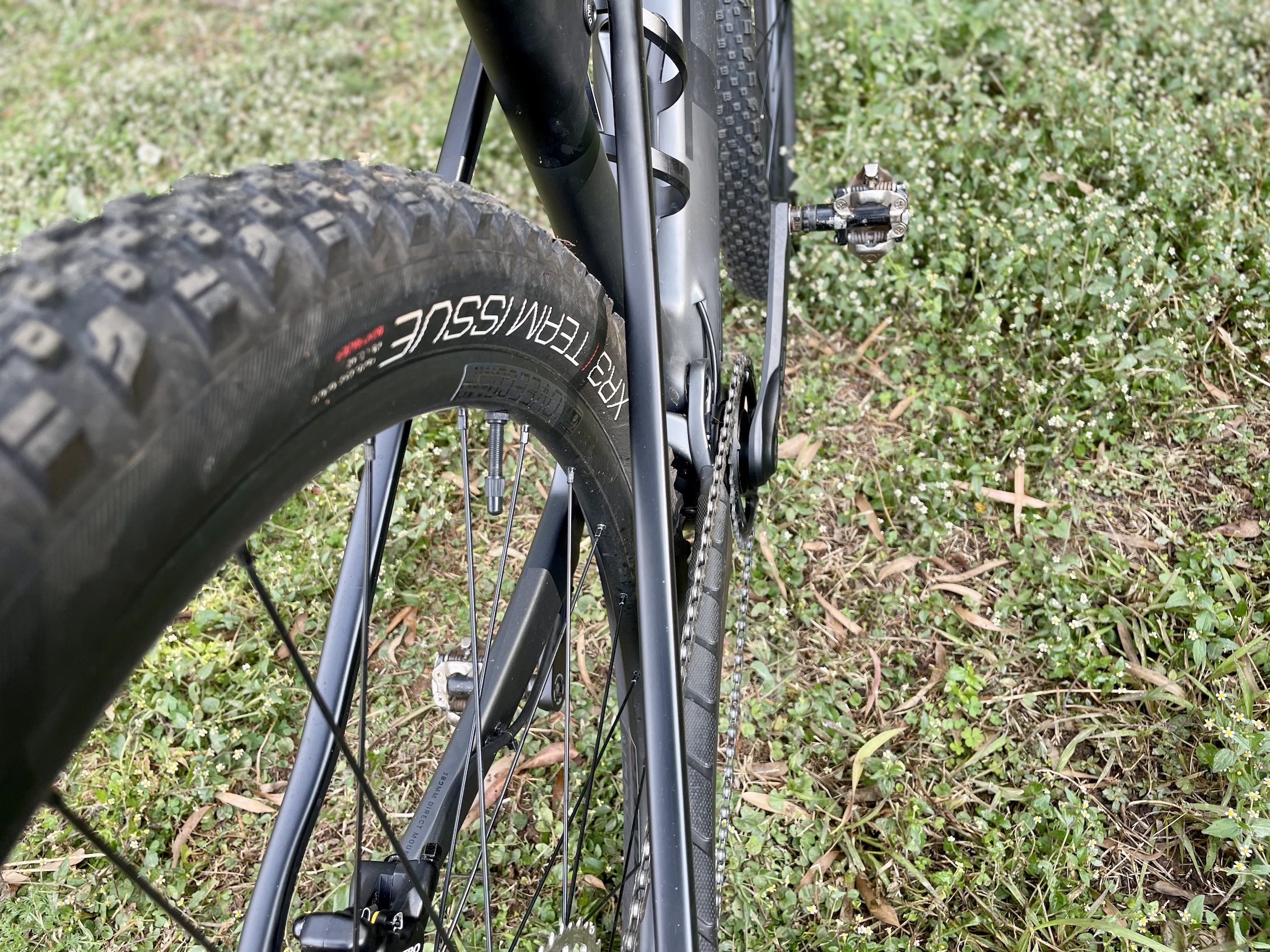
We were surprised to see such large brake rotors specced on a short-travel bike. But then it is an eBike, so what might be the norm on acoustic bikes, due to weight concerns, doesn’t really apply. They do really add stopping power and we appreciated that.
The tyres are 2.4-inches wide, but they looked and felt narrower, likely due to the narrowish 23mm rims. We only took the bike on actual mountain bike trails – mostly singletrack – so did feel it was a little under-gripped at speed when zipping through turns. Having ridden a range of Bontrager tyres, we do know that’s not a brand issue, but a model issue. The XR3 is fine for the rear, but we’d prefer a XR5 Team Issue 2.5-inch tyre on the front.
SUMMARY
We had a few questions when we received the E-Caliber for testing. But, as has been revealed here, those questions were all answered once we started riding the bike. In a market packed with mid-travel eBikes, the E-Caliber stands out as a full-sus eBike for the masses, or at least the majority. A bike that’s a capable allrounder, offers refined power delivery and is highly competent on most South African trails. It makes you want to tackle everything with some aggression – climbs, corners, descents and moderate-sized obstacles – but is also quite content to cruise at a moderate pace for those who aren’t highly skilled.
PRICE: R120000
MORE INFO: Full specs, features and tech details here.


